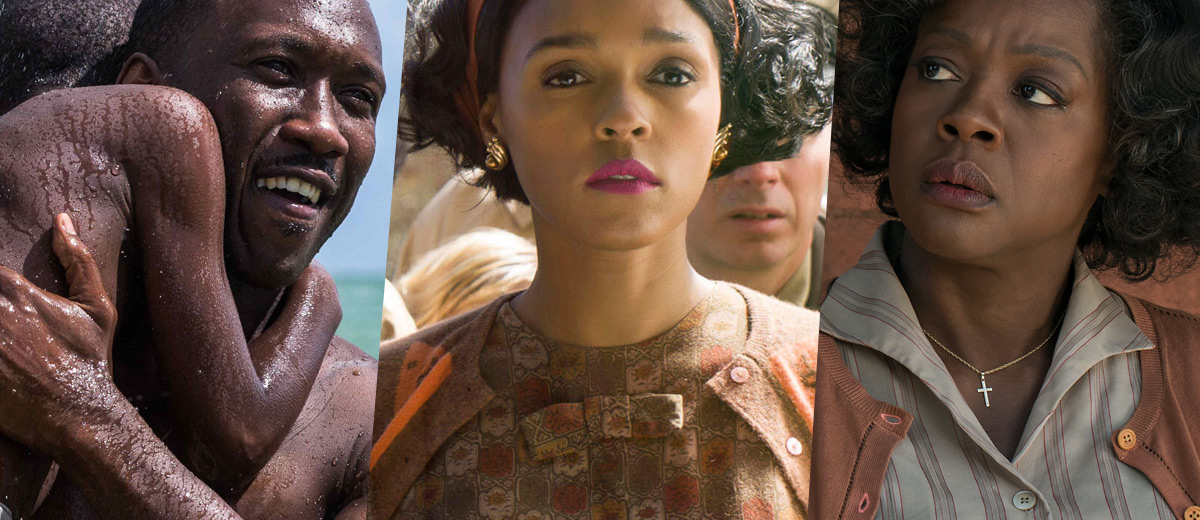Cinematography remains an all-male affair — no woman has ever been nominated in this category and 2017 isn’t changing that. One tiny bright spot: Mica Levi‘s uber-deserved nomination for “Jackie” does mean we’ve one more female composer nominated than last year, or indeed any year since 2000, considering that’s the last time a female composer was nominated at all (Rachel Portman for “Chocolat“) and a further three since a woman won (Anne Dudley for “The Full Monty“), and that was back when there were two scoring categories rather than one.
And when it comes to women in the biggest behind-camera creative roles — directing and writing — the picture is even more depressing. There is one female screenwriter nominated out of the 10 screenplay nominations: Alison Schroeder for “Hidden Figures,” and even there, it is a shared credit with the film’s director. Just to reiterate that fact because we can’t really get our heads around it: Out of 11 total writing nominees, one is female, and 10 are men. Even last year (which, again, was largely terrible in terms of female representation) saw four women named as writing nominees, two of them solo (Phyllis Nagy for “Carol” and Emma Donoghue for “Room“).
And in terms of directors, well, let’s just say that the 2017 Oscars bear out the recent figures that last year was, overall, a backwards step for female filmmakers, with almost every metric showing a downturn from what were already shitty figures in the first place. Rather like she did with “Selma” and Best Picture two years ago, Ava DuVernay rides to the rescue to save a category — this time Best Documentary — from being all-male-directed; and in the Foreign Language category, Maren Ade flies the flag for women much as “Mustang” did last year with her brilliant and bizarre “Toni Erdmann.” In each of those cases, they are the only women in the category. However, ladies, we’ve successfully locked the guys out of the Best Costume category entirely (100% female this year), so there’s that.

No woman has a directing credit or co-credit on any of the nominated Animated Features, no woman is named in the Production Design category (calm down, “Hail, Caesar!“‘s Jess Gonchor is a man), and while there are a couple of women named as directors in the shorts categories — Animated, Live Action and Documentary — even then, these lower-profile categories are overwhelmingly male-dominated. More to the point: There are, again, no female Best Director nominations, and not one of the nine — nine — Best Picture nominees was directed by a woman.
In 2017, Mel Gibson has more Best Director nominations than women do.
This is, of course, a depressingly reductive way to talk about movies and the movie industry, but this is the Oscars, and it’s a depressingly reductive business. And while there will no doubt be someone somewhere cranking up the old “the Academy can’t award movies that don’t get made” argument, well, that was the one used last year in defense of #OscarsSoWhite, and we’ve come a distance from there. So there’s no reason a similar sea change can’t occur for female filmmakers by next year. However, there is one further danger: Given the stark contrast between the increase in ethnically diverse representation and the marked lack of such an increase in the representation of women in key creative roles, it’s possible it will start to be regarded as one or the other: You can have black filmmakers or you can have female filmmakers, you might even be allowed the odd black female filmmaker, but threats to the white male hegemony will only be tolerated one at a time. This is a pernicious false equivalence, but if the last 12 months have taught us anything, it’s that those can take a hold.

But look a little closer at the films and filmmakers who are at the vanguard of the Academy’s new, more ethnically diverse slate of nominees. It’s no accident that each of them — “Moonlight,” “Hidden Figures,” “Fences,” and to a lesser degree “Loving” and “Lion” — while they may have been directed by men, have all told stories that are peculiarly sensitive to their female characters and have therefore yielded nominations for female actors in their casts. Plus, in the case of “Moonlight,” for its female editor; and, in the case of “Hidden Figures,” for its female screenwriter. That might seem tenuous, but remember again that those later are the only two female nominations in their respective categories, and these films overall yielded five of the 10 female acting nominations. It’s no accident that the biggest inroads in gender diversity came via black films, and the most diverse categories are those gendered female: It’s been proven time again that diversity breeds diversity of all stripes. And of course it does, because those who’ve had to struggle against marginalization in getting to make their films, and tell the stories that mean something to them and their communities, are more attuned to others who’ve faced similar struggles: more likely to hire them, more likely to support them, and more likely to vote for them.
So it might seem like a good day for people of color at the movies, and a bad day for women. But let’s trust that that is an anomaly and that a rising tide lifts all the ships: Any underrepresented voices gaining a platform is a victory for all the underrepresented, and while we celebrate the good stuff the 2017 nominations represent, we will be advocating for time to tell the truth of that in 2018.






This article should also give a much-deserved shout out to the amazing female producers who helped make 5 of the Best Picture nominees possible: Carla Hacken and Julie Yorn (Hell or High Water), Donna Gigliotti and Jenno Topping (Hidden Figures), Angie Fielder (Lion), Kimberly Steward and Lauren Beck (Manchester By the Sea), and Adele Romanski and Dede Gardner (Moonlight).
10 females were nominated for acting though.